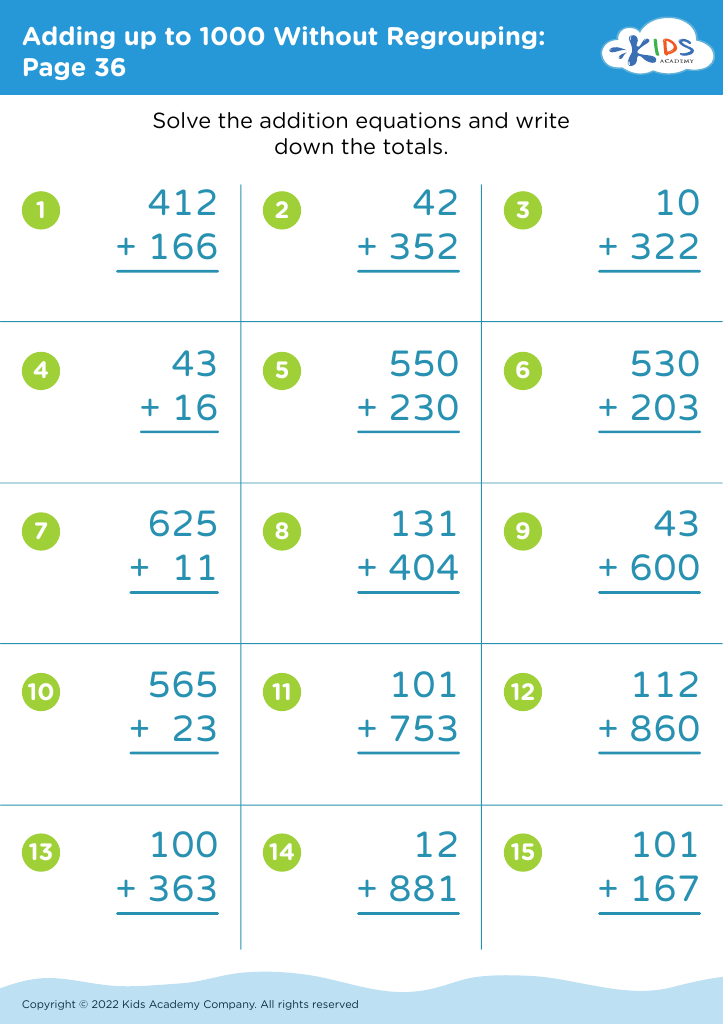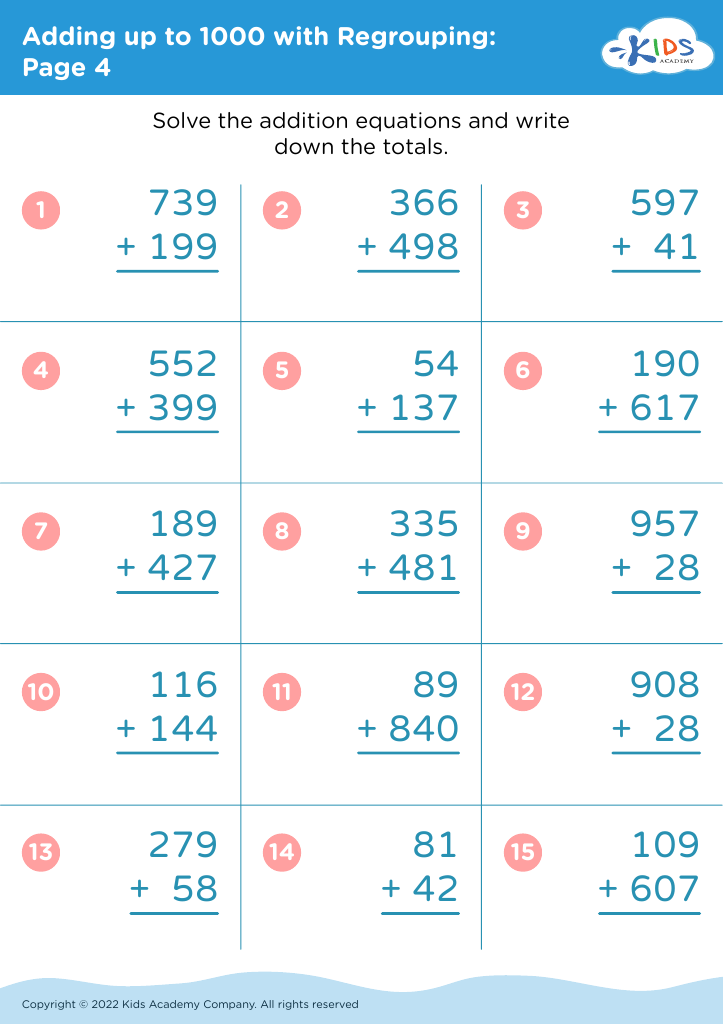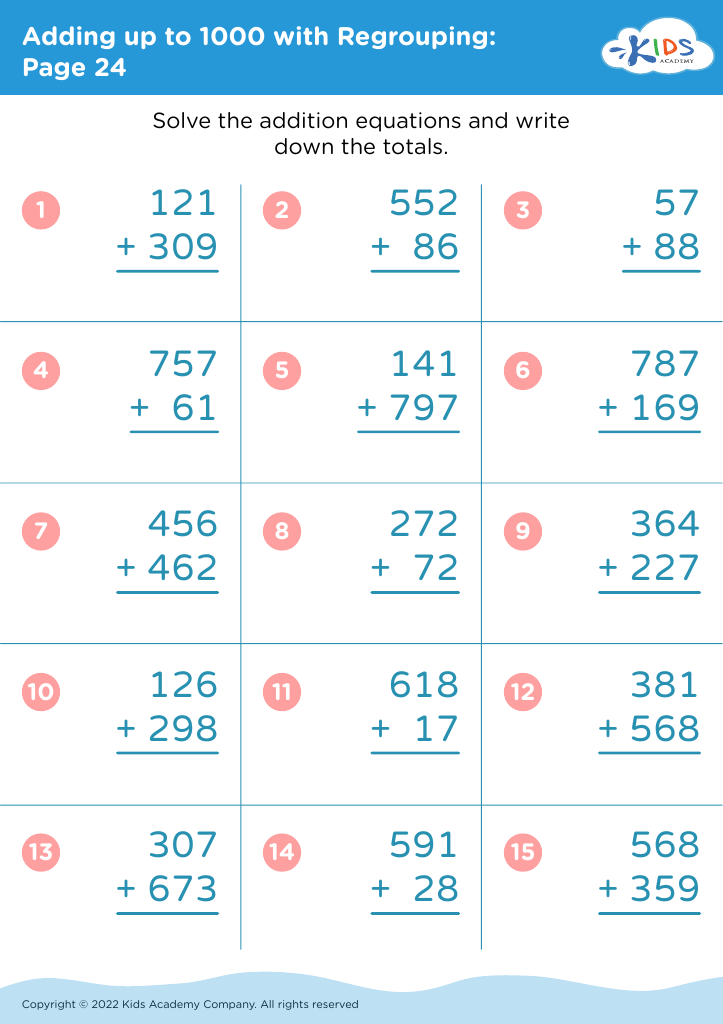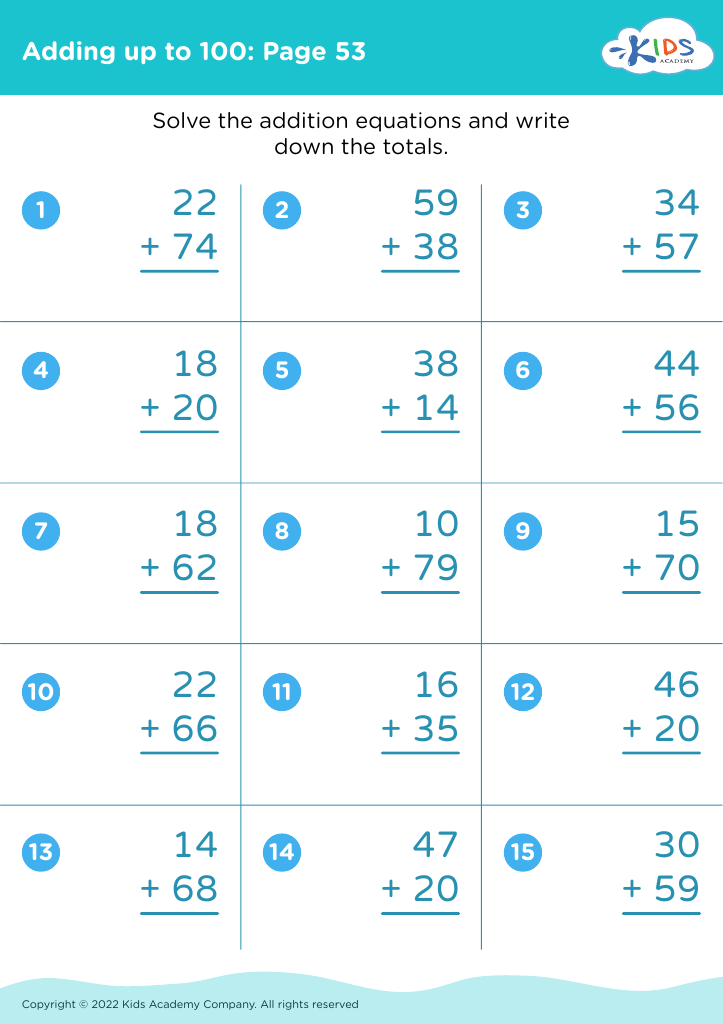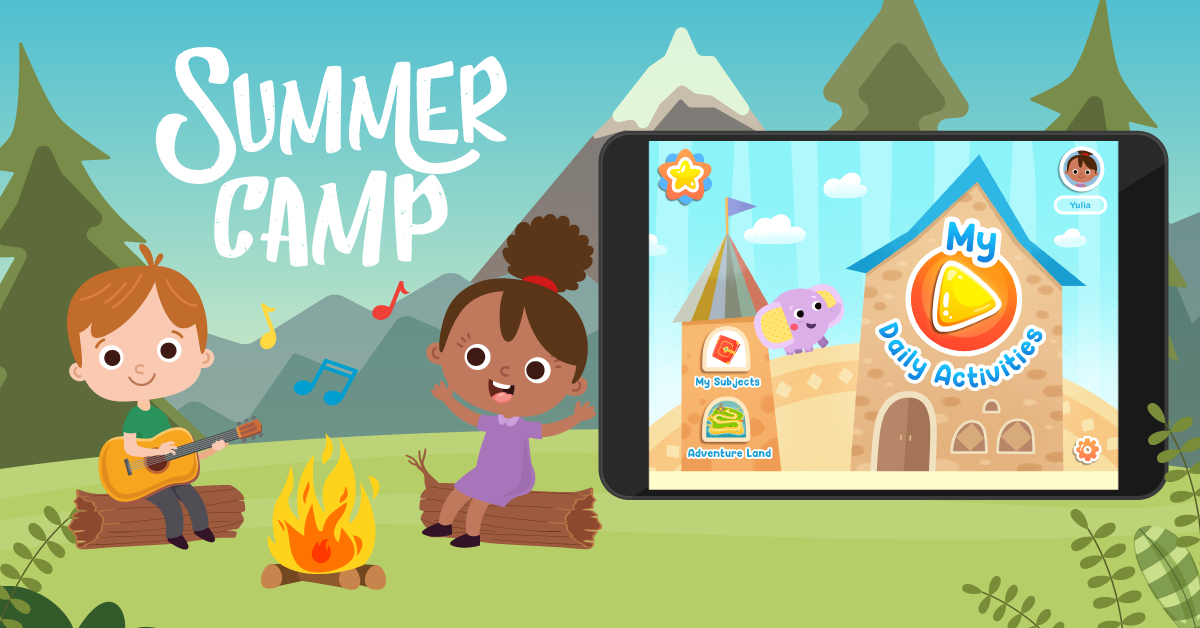Fraction comparison Addition Worksheets for Ages 6-9
29 filtered results
-
From - To
Enhance your child's math skills with our "Fraction Comparison Addition Worksheets for Ages 6-9" at Kids Academy! These engaging worksheets are specifically designed to help young learners master the concept of comparing and adding fractions. Through fun and interactive activities, children will develop a solid understanding of fractional parts, equivalence, and addition. Our printable worksheets are perfect for home or classroom use, featuring colorful illustrations and clear instructions to keep kids motivated and excited to learn. Get started today and watch your child’s confidence and proficiency in fractions grow! Visit Kids Academy for more details and resources.
Understanding fraction comparison and addition is crucial for children ages 6-9 because these skills lay the groundwork for more advanced mathematical concepts. At this developmental stage, children's cognitive abilities are expanding, allowing them to grasp more complex ideas than they could at younger ages. Here’s why parents and teachers should care about introducing these concepts early on:
-
Foundation for Future Learning: Mastering fractions is fundamental for later work in mathematics, particularly in areas like algebra, geometry, and data analysis. Building a strong foundation early can make these future topics less intimidating and more accessible.
-
Real-Life Application: Fractions are everywhere in daily life – from cooking recipes to dividing a pizza among friends. Teaching kids to compare and add fractions helps them see the relevance of math in their everyday experiences, fostering practical problem-solving skills.
-
Critical Thinking: Understanding fractions requires analytical thinking and reasoning. Comparing and adding fractions develop a child's ability to think critically, compare quantities, and recognize relationships between parts and wholes.
-
Confidence in Math: Early success with fractions can build a child’s confidence in their mathematical abilities. When parents and teachers support children in mastering these skills, they help instill a positive attitude toward math, encouraging a lifelong interest and proficiency in the subject.
Ultimately, investing in a child's understanding of fractions from an early age equips them with valuable tools that enhance both their academic and everyday lives.


